Facial granuloma Images
Go to article Facial granuloma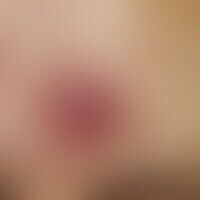
Granuloma eosinophilicum faciei (Granuloma faciale). approx. 0.8 cm in diameter, solitary, slow-growing, slightly raised, moderately coarse, red node. characteristic is the strawberry-like surface. diascopic: yellow-brownish self-infiltrate. no subjective complaints, no accompanying internal symptoms.

Granuloma eosinophilicum faciei. 2.2 cm large, firm, painless, broadly basal red lump in an 18-year-old woman, existing for 6 months, with a smooth surface and well movable over its lower surface.



Granuloma eosinophilicum faciei: Very discreet, symptom-free, flat plaque that has existed at this site for 0.5 years. 42 years of otherwise healthy male.



Granuloma eosinophilicum faciei (Granuloma faciale): Typical finding in a 72-year-old man. No significant secondary diseases, no medication history. The finding has existed for several years, is slowly progressive. No significant symptoms.

Granuloma eosinophilicum faciei (Granuloma faciale): Detailed view.
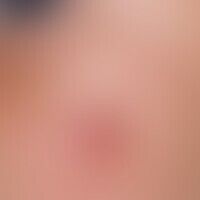
Granuloma eosinophilicum faciei. red lump in the area of the cheek in a child, existing for months, not painful. slow progression of size. here typically a somewhat "punched" surface.
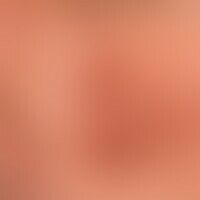
Granuloma faciale: Red-brown, blurred and irregularly configured, symptomless plaque in a 52-year-old man. Clearly pronounced follicle accentuation. No known secondary diseases, no medication anmnesia. The finding has existed for several months and is slowly progressive. Detailed picture of multiple plaques in the face.
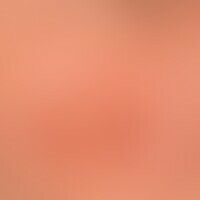
Granuloma faciale: Red-brown, blurred and irregularly configured, symptomless plaque in a 52-year-old man. distinct follicular prominence. no known secondary diseases, no medication anmnesia. the finding has been present for several months and is slowly progressive. detailed picture of multiple plaques in the face.

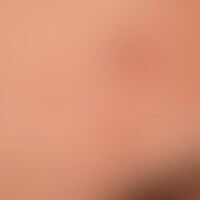
Granuloma faciale: Multiple, reddish-brown, blurred and irregularly configured, symptomless plaque in a 52-year-old man. No known secondary diseases, no drug anemia. The finding has been present for several months and is slowly progressive. Detailed view of multiple facial plalues.

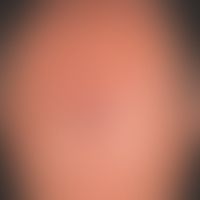
Granuloma eosinophilicum faciei (Granuloma faciale): Unusual, flat, completely asymptomatic, existing for 2-3 years, slowly increasing in size, jagged, limited red plaque with central (artificial?) erosion and scaly crust formation; for course see following figure.

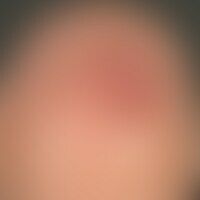
facial granuloma: red lump, existing for 5 years now, slowly progressing in size and limited in size. small secondary plaques in the surrounding area. histological findings characterized by increasing fibrosis. findings 2 years later (see initial findings in fig., before). treatment with fast electrons. after that clear regression. no further progression. note smooth surface relief. no follicle drawing.
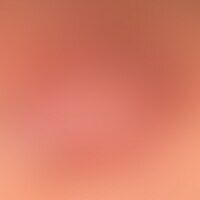
Granuloma faciale: Detailed view. large lump with smooth surface. strikingly large and bizarre tumor vessels.

Granuloma eosinophilicum faciei (Granuloma faciale): Therapy resistant 2.5 cm high, red, surface smooth knot.

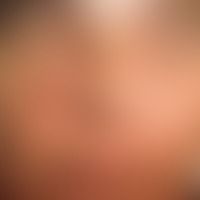

Granuloma eosinophilicum faciei (Granuloma faciale). 6-month-old finding in a 7-year-old child. Slightly raised, moderately coarse, brown-red plaques with dilated follicle ostia. No other complaints. Brown-reddish infiltrate of the patient's own body under glass spatula pressure.

Granuloma faciale: The otherwise healthy 37-year-old patient has been noticing this painless, red, smooth plaque for months.






Granuloma eosinophilicum faciei (Granuloma faciale). dense, diffuse infiltrate in the upper and middle dermis. vascular orientation is not detectable. epidermis and skin appendages remain unaffected.

Granuloma eosinophilicum faciei (Granuloma faciale), section of the above overview illustration. The infiltrate consists of lymphocytes, neutrophil leukocytes and little nuclear dust as well as numerous eosinophilic leukocytes which dominate the histological picture in places.